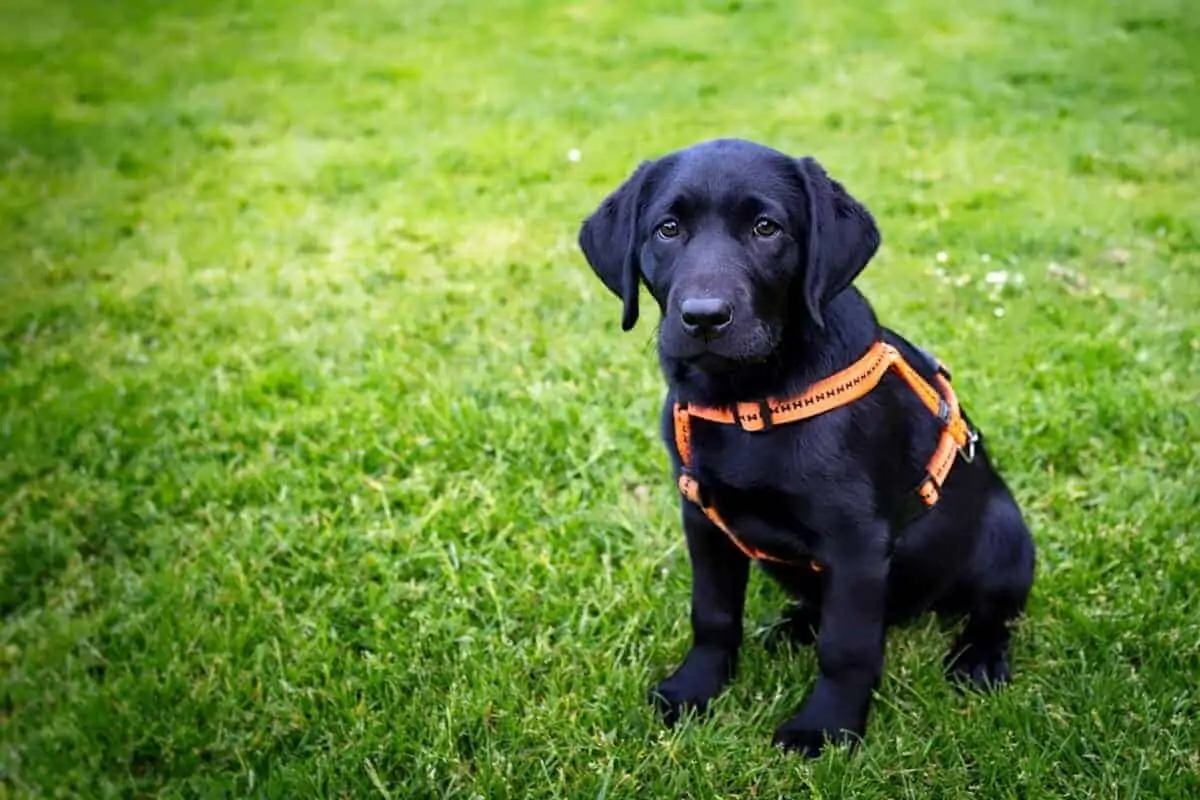Going on walks with your dog and your child can be a pleasant way to get out of the house and provide a source of exercise for you and your furry family member. Being outside is also highly beneficial for a baby’s cognitive and motor development and can help them sleep more soundly at night. It’s an all-around win…unless you struggle juggling your leashed dog and the stroller.
There are several ways you can make any walk with a dog and a stroller an easy and enjoyable experience, but most of this comes down to properly training your pooch. If your dog can walk without pulling, the experience is already easier by leaps and bounds. Support this training with a 6-foot-long dog leash and some common commands like “heel.”
Because this activity can become very stressful very easily its important to be patient and take a step back if things are not going tight. Hopefull some of the advice in this article will help make your walks much more enjoyable. Read on to learn some of the easiest ways to ensure you can enjoy your walks with both your dog and young children in strollers.
Contents
Tips to Make Dog and Stroller Walks Easier
Walking your dog with a stroller can be extremely stressful if everything doesn’t go smoothly. You are in control of two or three valuable family members during this process, your dog and your child/children, and want to ensure all parties are safe. You also want to make sure your dog receives the proper amount of exercise since this is the easiest way for most owners to burn off their dog’s excess energy.
With so much on the line, it is important that this is a pleasant experience, especially if performed daily. To help guarantee this, here are some tips on how to make your walks with a dog and stroller as easy as possible.
Leash Train Your Dog
Before you even attempt to walk your dog and push a stroller, you must make sure your dog is leash trained. We cannot stress this enough. A great source of frustration for dog owners when they go on stroller walks is if their dog is constantly pulling or misbehaving.
Not only does this inhibit the walk and ruin the experience, but it can also be extremely dangerous. If your dog pulls you hard enough, it could cause you to lose control of the stroller with your child inside or lead to all sorts of accidents.
Although it is certainly convenient to walk your dog and go on a pleasant stroll with your child at the same time, the best way to ensure you can do this in the future is to walk your dog separately until they are fully leash trained. This allows you to focus solely on your dog and devote all of your attention to their training while significantly lowering the risks of the walk.
Using a chest harness is particularly beneficial for leash training as it pulls the dog back by their chest rather than their neck. This inhibits injury to the dog and has been proven to be much more effective in mitigating pulling than any sort of equipment that would go over their head or face.
Check out our article on “How To Stop Your Dog Pulling On Leash”, for even more great tips on training and what to expect.
Use a Standard Leash
A common mistake that owners will make when they walk their dogs is that the dogs are given too much freedom with their leash. Retractable leashes are extremely popular due to their versatility in choosing various leash lengths when your dog isn’t in a controlled setting. However, they are not the best choice for walking with a stroller or leash training.
Check out this article on the best no pull harnesses.
Since retractable leashes can change in length, your dog is more likely to pull because when the leash isn’t locked, they realize if they pull, they’re rewarded with a longer leash and get to more places. Another set-back is that if this leash breaks, your dog can have up to 26-feet of distance from its owner, making them extremely difficult to control, even without a stroller.
The best way to maintain control of your dog, apart from training, is to keep them on a standard leash about 6-feet in length. This will keep your dog close to your side as you walk but still give them enough space so they can avoid your feet and the stroller.
Maintain Control Using Commands
Control is key in this situation. Although dogs can be especially well trained, it only takes one instance where you lack control for them to do something potentially dangerous. Walks are fun, but remember that they are filled with constant forms of stimulation and new things your dog will want to explore like:
- Runners
- Other dogs
- New smells
- New people
- Cars
- Sounds (ex. sirens, planes, horns)
- Litter
Leash training your dog with help your control insurmountably. But there are a few other things you can do to enhance this. One is to teach your dog basic commands that will help ease stress throughout various points in the walk.
Here are the basic commands your dog should know for stroller walks and why:
| Command | Why and When |
| Wait | This command is most beneficial when you are getting ready to head out the door. Strollers are big pieces of equipment and can be difficult to maneuver. The last thing you want is for you to try and get your hefty stroller through the door, and your dog bolts out the open doorway. Teaching them to wait will allow you to easily open the door, get the stroller through, and then your dog to follow. |
| Leave it | Leash training is great for preventing your dog from pulling, but it is always a good idea to supplement this training with a “leave it” command. This will ensure that any time your dog wants to inspect any sidewalk trash or maybe bite on the stroller that you can get them to stop immediately without completely interrupting the walk. |
| With me | A “with me” command is great for individuals who prefer to run rather than walk. Using this command indicates to your dog that you are about to pick up the speed from a walk to a run but also tells them that you want them to stick with you, not run full out to the point that they’re pulling you along. |
| Heel | One of the best commands in the dog walker arsenal is “heel.” If you see a potentially dangerous situation or a scenario you know will excite your dog, instructing them to heel will allow you to maintain control of both them and the situation while they sit calmly by your side. “Heel” is also extremely helpful at crosswalks and traffic lights. |
Remember that training your dog will take time and patience and so don’t be discouraged if they don’t perform perfectly for you. Constant reinforcement of commands and positive praise with lots of treats makes a big difference. Take a look at this realistic leash training session in the video below, it shows dogs have desires to explore and with the many distractions it can be difficult to get it right the first time. Keep at it and you will get there.
Don’t Attach Your Dog to the Stroller
Regardless of how well your dog is trained, it is never advisable to attach them to the stroller. It is certainly tempting to only have to worry about pushing the stroller than holding your dog’s leash at the same time. However, situations can escalate to a dangerous level quickly if you attach your dog to the stroller.
The moment a dog is too excited or even a bit protective, they could run ahead or unexpectedly stop, effectively ripping the stroller out of your hands.
Not only have you now lost control of both your dog and your stroller with your child inside, but your dog could easily pull the stroller over. This could easily injure your child, or worse, it could dump them in a dangerous location, like the street.
An even scarier situation will be if the stroller doesn’t tip over. Since your dog is attached to the stroller, it could scare your dog into a frenzy as it tries to run away from the rolling terror behind it. Unfortunately, since they’re attached together, this means it’ll never outrun or escape the stroller and could run indefinitely or into dangerous obstacles like fences, cars, and benches that could easily injure or kill both your dog and child.
If you are truly confident with your entire being that your dog is leash trained to perfection, consider a waist leash instead of hooking them to the stroller. This will allow you to be hands-free with your dog but still have an element of control.
At least this way, if something triggers a reaction from your dog, the worst that would happen is they could potentially pull you off your feet. Although this is dangerous for you, it is far less stressful and terrifying than the situations mentioned above.
Educate Your Kids on Walk Protocol
It’s easy to put all the emphasis on the dog in this situation. However, there are other parties to consider in this scenario. Not all stroller riders are infants. There are vast amounts of individuals that like to walk their dogs with their toddlers in the stroller.
Although toddlers are certainly cute and innocent, they can easily distract or distress your dog if not instructed otherwise. In a way, toddlers can be just as inquisitive and playful as dogs, and so, it isn’t unlikely they’d reach out of the stroller to pull your dog’s tail, fur or simply call for them to come over.
If your dog is too focused on your toddler, they will likely block the stroller and inhibit the walk, and this is by no means the dog’s fault. It is on the toddler and you as the person in control.
If your child is old enough to interact and distract your dog, do your best to teach them how best to behave on these outings. Instruct them to leave the puppy be when it’s walking, even if it’s hard. For the dog, this is the time for exercise and focus, not for play.
Choose To Walk Your Dog At The Right Times
One idea that can often help immensely is choosing to walk your dog at the right time. This can often be harder than it seems as it requires you to structure your day around your child, dog, and all the things that you need to do also.
What I mean by the right times a time when there are fewer people out and about. This will reduce the number of distractions for your dog and you may find it much easier to walk, especially if your dog is easily distracted. The summer months are of course the easiest time of year for this as you have so much of the day available, including late afternoons when the sun is still shining.
If the light permits it the early in the morning you go out the fewer people and distractions you will come across. Early morning can have some great benefits to your health getting you started for the day and by the time you end up going to bed, your brain is ready for a good sleep. Check out our article on “Walking Your Dog In The Morning”, this should give you some great tips and advice on the benefits and how best to go about it.

Final Thoughts
When everything is going smoothly, walks can be fun family outings with your children and pet, but a fair amount of work goes into making this a reality. The best thing you can do is train your dog and praise them frequently when they’re behaving well on the walk. Remember, walk success isn’t all on your pet. There are three parties present for this experience, and everyone needs to contribute to making it work.

